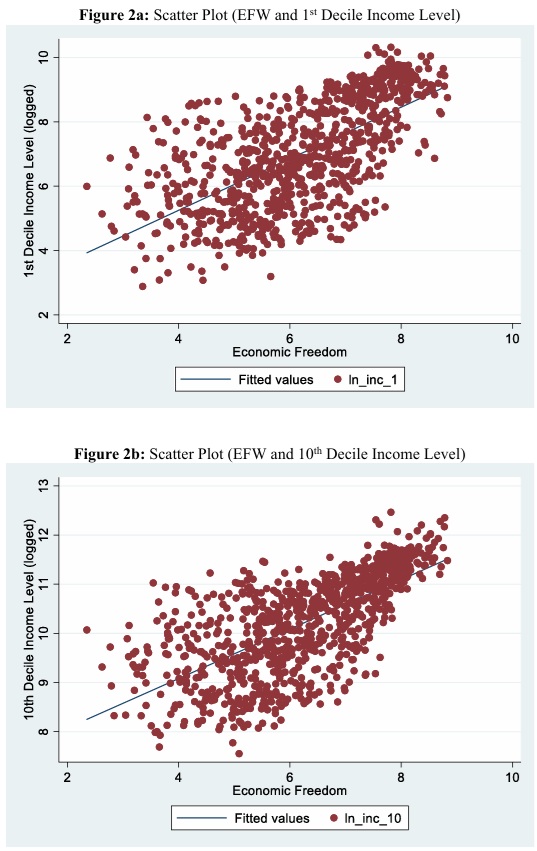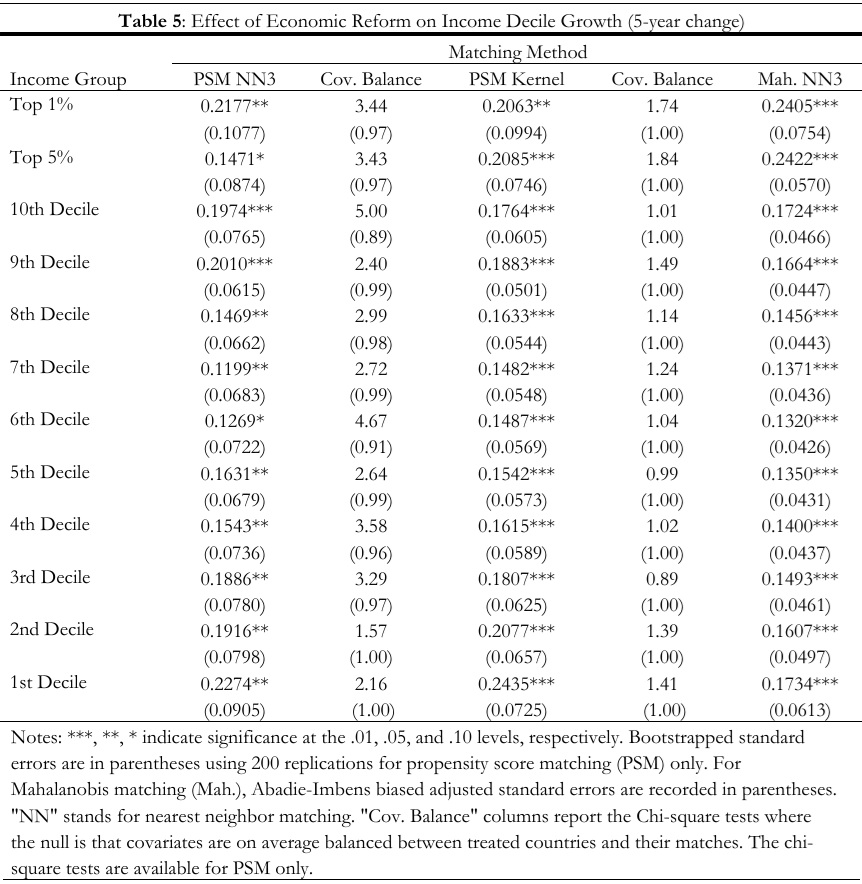In 2014, I dug through Census Bureau data to show that the well being of all income groups is closely correlated.
More specifically, the incomes of all five quintiles (from the poorest 20 percent up to the richest 20 percent) tend to rise and fall together.
My takeaway was that President Kennedy was right. A rising tide does lift all boats. I wrote, “If you want policies that help the poor, those also will be policies that help the middle class and rich.”
In other words, policymakers should focus on growth rather than inequality or redistribution.
I then gave some advice to my leftist friends, writing that, “if you hate the rich, you need to realize that policies hurting them will almost certainly hurt the less fortunate as well.”
Now let’s investigate whether this is true in other nations as well. Let’s start by looking at two charts showing that income levels for both the bottom 10 percent and top 10 percent are higher when there is more economic freedom.
These figures seem compelling, but we also know that correlation is not causation (after all, crowing roosters don’t cause the sun to rise).
Fortunately, we have an answer. The above figures come from some academic research by Justin Callais and Andrew Young. In a 2023 article published by the Journal of Comparative Economics, they use statistical analysis to determine whether there is a link between economic liberty and income levels.
Here are some of the findings.
Does a rising tide of economic freedom lift the boats of a country’s poor, middle class, and wealthy? Or – as most commonly is alternatively hypothesized – does greater economic freedom favor the wealthy at the expense of the rest? …In this paper we employ matching methods to address…concerns. …We study changes in economic freedom and their relationship to inequality using 117 countries from 1970 up through 2015.
We examine income deciles (both population shares and average levels) as well as Gini coefficients. By employing matching methods, we work to mitigate endogeneity and nonlinearity concerns. …We use logs of the income levels so that the outcome…can be interpreted as a growth rate. The results are reported in table 5. Each of our 36 estimates are positive and statistically significant. …The picture it paints is one of economic freedom as a rising tide that lifts all boats. …the results here are consistent with an increase in economic freedom causing positive income growth, and growth that is not discernably different across income deciles. …it is difficult to argue that the modest increases in income inequality negate the broad-based gains to individuals generally.
For wonky readers, here is the aforementioned Table 5.
I think this evidence is compelling.
And it matches other research I’ve shared in recent years.
But I’m not overly optimistic that some folks on the left will change their minds. As captured by my Eighth Theorem of Government, many of them are not primarily interested in helping the poor.
Indeed, I fear some of them (including at the IMF) are motivated primarily by resentment and spite for the rich. Indeed, they might even be willing to hurt poor people if they knew the rich would be hurt even more.
Margaret Thatcher was right!


No comments:
Post a Comment